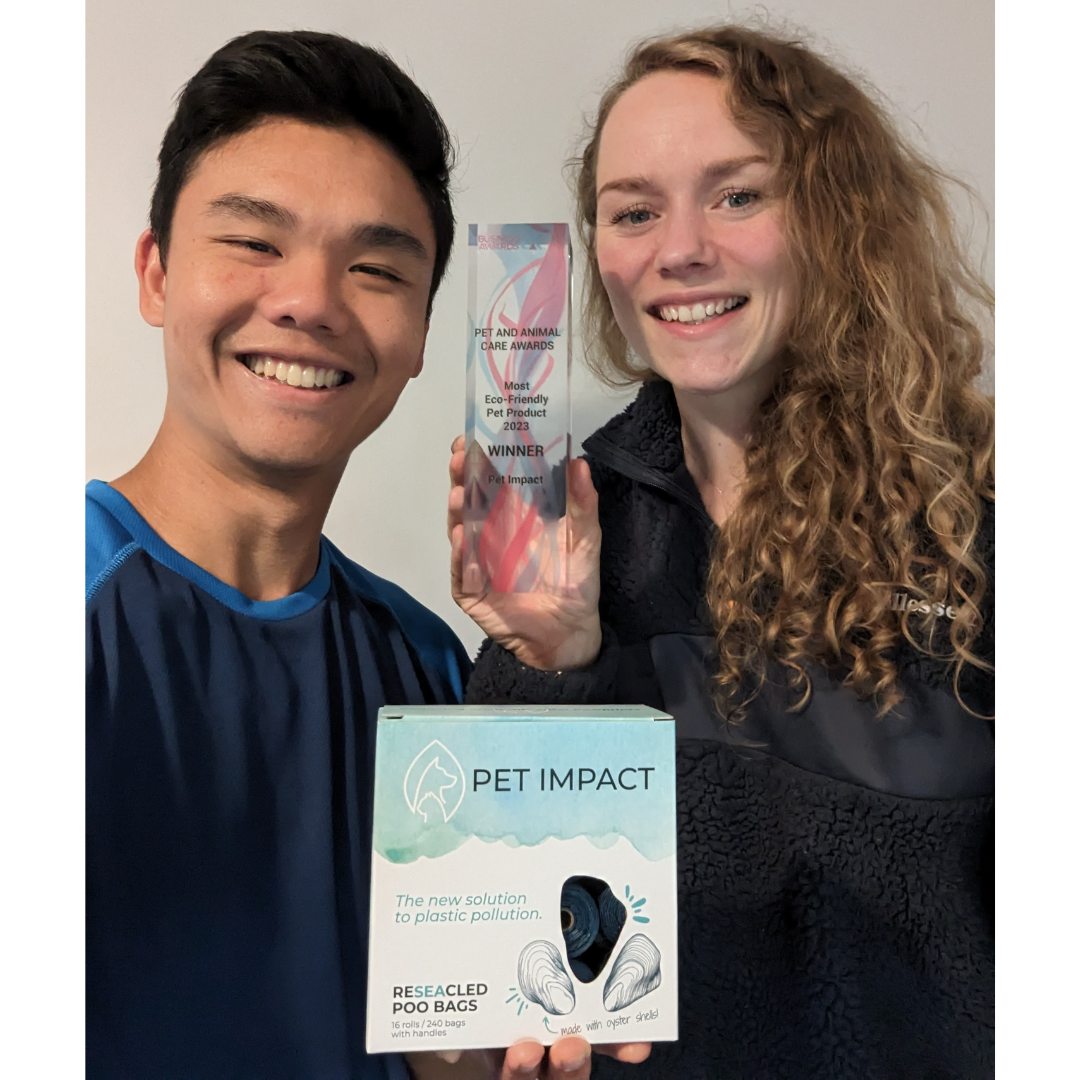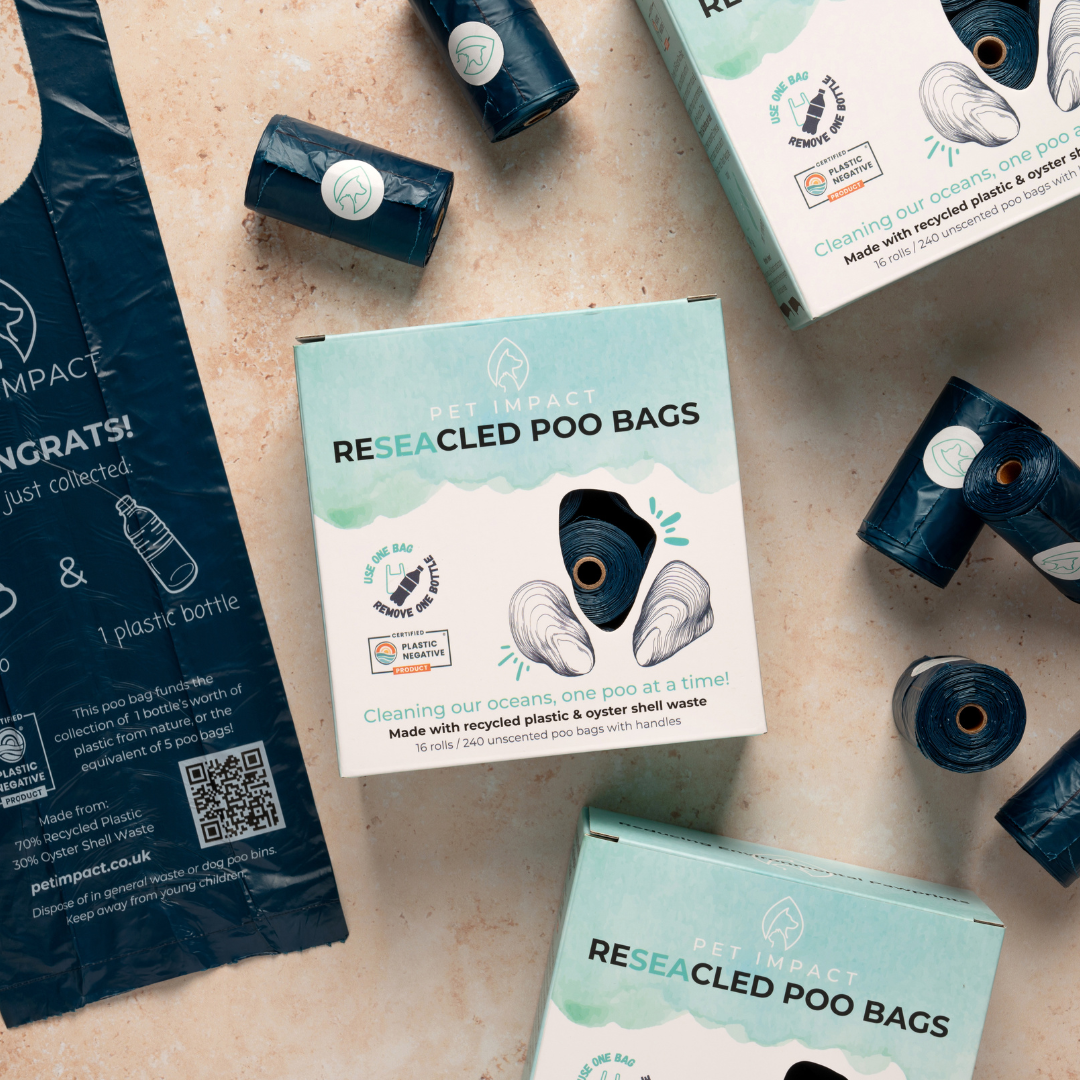Debunking “Eco-Friendly” Poo Bag Myths & Misconceptions
Alice is the co-founder of Pet Impact, who produce award-winning ReSEAcled Poo Bags
Alice Judge
Poo bags are the biggest form of physical waste generated from owning a dog, so it’s no wonder that dog owners have been quick to adopt “biodegradable” or “compostable” options that are marketed as eco-friendly. Many veterinary practices looking to reduce their environmental footprints have done so too.
Poo bags branded as “compostable” have been recently popularised, claiming to be different and better than “biodegradable” alternatives. However, this is where the misconceptions begin. In truth, compostable bags are simply a subset of biodegradable poo bags that require specific human intervention (compost conditions) to breakdown [1]. Unlike bags labelled as “biodegradable”, compostable poo bags often have certifications that assess for compostability, which feeds the idea they are a good sustainable option. However, research has shown that this is not necessarily the case.
Here are 3 of the biggest misconceptions around “eco-friendly” compostable poo bags.
1. Compostable poo bags will biodegrade in landfill or the environment.
The successful biodegradation of these bags is highly conditional. The two leading certifications held by compostable poo bags are TUV OK Compost (Home or Industrial) and the EN13432 Standard. Both assess for the bag’s biodegradation in specific compost environments – either home compost or industrial compost [2,3]. However, as there are no industrial composting facilities in the UK that accept dog waste and most dog owners do not have a dog waste composter at home, these certifications are irrelevant for poo bags. They end up in landfill or incineration.
The conditions in landfill vary greatly to that of a compost environment. Waste is densely compacted and mummified in landfill, with a lack of oxygen or living microorganisms – two crucial requirements for active biodegradation. The temperatures, moisture levels and other environmental conditions are also inappropriate for compostable poo bags to biodegrade here. Instead, the bags decompose anaerobically, leading to a release of methane, a potent greenhouse gas [4].
Similarly, conditions in the open environment vary greatly from one to the next (soil, waterways, hanging from a tree). It is extremely unlikely for such conditions to replicate that of a controlled compost environment, meaning these bags do not successfully breakdown if they end up in these locations either [5].
2. Compostable poo bags are made of plant material or cornstarch.
While some plant-derived raw materials go into the making of these bags, it is a misconception that they are 100% plant-based. In reality, the bags contain 50-80% polybutylene adipate terephthalate (PBAT), a biodegradable plastic polymer derived from fossil fuels [6, 7]. The bags also contain polylactic acid (PLA), which is derived from cornstarch [6, 7]. However, PLA is often a minority ingredient, and manufacturers have shared how a bag completely made of “plant-derived” raw ingredients would not have the strength and durability to function as a poo bag (think of how compostable bin liners tear and leak easily!).
3.Compostable poo bags are not plastic and do not contribute to microplastics
This is a natural misconception that results from the one above and has been amplified by companies labelling their compostable poo bags as “plastic-free”.
“Plastic” is a broad category, with many different types of plastics that fall under it [1]. While the raw materials are sometimes made from plants, these plants have been heavily processed, blended and transformed to become a plastic polymer. So compostable poo bags are rightfully classed as a type of plastic, given their polymeric chemical compound structure and physical properties of plasticity. The two polymers referenced above, PBAT and PLA are types of plastic polymers. Without the correct compost conditions for their biodegradation, compostable poo bags behave just like any other plastic and shed microplastics.
What’s the solution?
The “eco-friendliness” of a poo bag must be assessed beyond biodegradability or compostability. The environmental impact of its manufacture needs to be looked at alongside its disposal. The disposal systems available for dog waste also plays as much a part as the poo bags when determining sustainability.
Currently, the UK lacks composting infrastructure for dog waste. This means that unless dog owners can manage their own dog waste composting system at home, all dog poo bags will be sent to landfill or incineration, rendering “biodegradability” as a sustainable feature irrelevant.
It therefore makes more sense to reuse existing waste materials to make poo bags, over creating compostable or biodegradable poo bags out of virgin materials. This reduces the overall amount of “new” waste produced and conserves scarce resources. Research has shown that recycling continues to be the more sustainable option – conserving scarce resources, reducing reliance on fossil fuels, lowering virgin plastic pollution and requiring less energy while emitting fewer carbon emissions [12, 13].

About Pet Impact
The vet-run brand Pet Impact have used a research and evidence-based approach to develop their award-winning ReSEAcled Poo Bags. These poo bags are made of recycled plastic and oyster shell waste. They are designed for the majority of dog owners and veterinary practices whose dog poo bags end up in landfill or incineration. ReSEAcled Poo Bags are the world’s first and only certified Plastic Negative poo bag. This means that every bag funds the additional collection and removal of more plastic waste from nature. For every poo bag weighing 2 grams, 10 grams worth of plastic litter is removed through Pet Impact’s partnership with rePurpose Global, an international organisation fighting plastic pollution. More info on these bags can be found at:

References:
1. International Knowledge Hub Against Plastic Pollution (IKHAPP). (2023). Policy brief: The global plastics treaty - What is the role of bio-based plastic, biodegradable plastic, and bioplastic? Possible core obligation 8. Retrieved from https://ikhapp.org/material/po...
2. British Plastics Federation (BPF). (n.d.). Standards for compostability. Retrieved from https://www.bpf.co.uk/topics/S...
3. European Bioplastics. (2015). EN 13432 - Industrial compostability of packaging and its relation to the European packaging directive. Retrieved from https://docs.european-bioplast...
4. Intertek. (2012). Final Report: Oxo-biodegradable Plastic Degradation and its Impact on the Environment. Retrieved from https://www.biodeg.org/wp-cont...
5. Break Free From Plastic. (2022, July 18). Biodegradable and compostable plastics. Plastic Solutions Review. https://plasticsolutionsreview...
6. Royal Society of Chemistry. (2020). Progressive Plastics: Sustainability through Innovation in Chemistry. Retrieved from https://www.rsc.org/globalasse...
7. Kuroda, Y., & Sugahara, T. (2023). Circularity Assessment of Polypropylene Using a Harmonized Framework for Environmental, Economic, and Social Indicators. Sustainable Energy & Fuels, 7(7), 3318-3327. https://doi.org/10.1039/D2SU00...
8. Biodegradable plastic particles in finished compost: Undesired remains (2023, March 13). CHEM Europe. https://www.chemeurope.com/en/...
9. Bandopadhyay, S., Subashchandrabose, S. R., & Naidu, R. (2022). Understanding the fate of biodegradable and compostable plastics in the environment. Journal of Environmental Quality, 51(3), 401-414. https://doi.org/10.1002/jeq2.2...
10. Compostable plastics and industrial composting sites: Do they really match? (2020, June 22). Bioplastics News. https://bioplasticsnews.com/20...
11. Lambert, S., & Wagner, M. (2018). Microplastics are contaminants of emerging concern in freshwater environments: An overview. Water Research, 143, 362-381. https://pubmed.ncbi.nlm.nih.go...
12. Prevented Ocean Plastic. (n.d.). Recycled plastic: An undervalued carbon reduction strategy. https://www.preventedoceanplas...
13. Walker, S., Roth, B., Kaplin, D., Elliott, J., Smith, R., & Syrett, R. (2016). Environmental and economic life cycle analysis of carbon fiber composite recycling. AIP Conference Proceedings, 1779(1), 140001. https://doi.org/10.1063/1.4965...